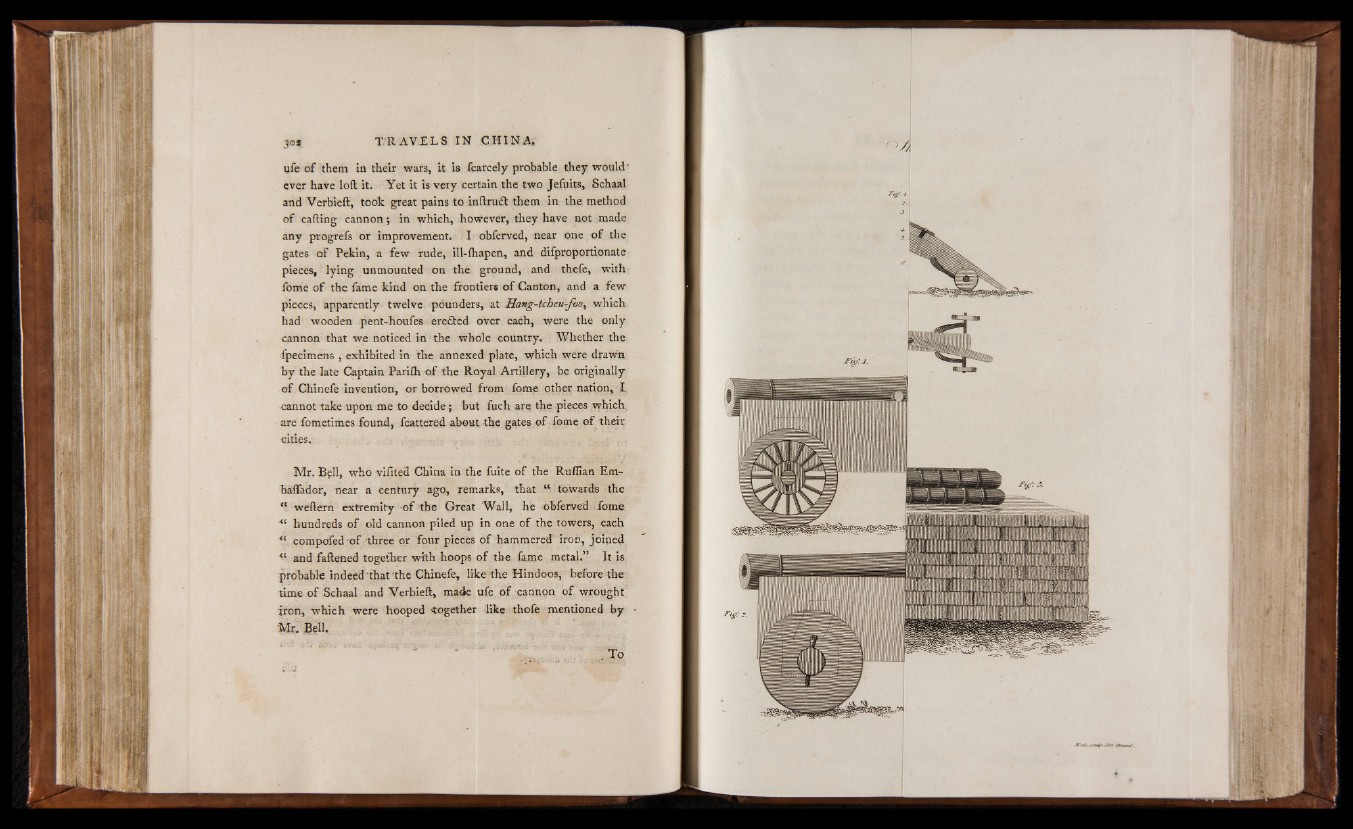
ufe o f them in their wars, it is fcarcely probable they would-
ever have loft it. Yet it is very certain the two Jefuits, Schaal
and Verbieft, took great pains to inftruft them in the method
o f calling cannon; in which, however, they have not made
any progrefs or improvement. I obferved, near one o f the
gates o f Pekin, a few rude, ill-lhapen, and difproportionate
pieces, lying unmounted on the ground, and thefe, with
fome o f the fame kind on the frontiers o f Canton, and a few
pieces, apparently twelve pounders, at Hang-ttbeu-Jbo, which
had wooden pent-houfes eredted over each, were the only
cannon that we noticed in the whole country. Whether the
fpecimens , exhibited in the annexed plate, which were drawn
b y the late Captain Pariih o f the Royal Artillery, be originally
o f Chinefe invention, or borrowed from fome other nation, L
cannot take upon me to decide; but fuch are the pieces which
are fometimes found, fcattered about the gates o f fome o f their
cities. ;
Mr. Bell, who vifited China in the fuite o f the Ruffian Em-
baflador, near a century ago, remarks, that “ towards the
“ weftern extremity o f the Great Wall, he obferved fome.
hundreds o f old cannon piled up in one o f the towers, each
“ compofed o f three or four pieces o f hammered iron, joined
“ and fattened together with hoops o f the fame metal.” It is
probable indeed that the Chinefe, like the Hindoos, before the
time o f Schaal and Verbieft, made ufe o f cannon o f wrought
jron, which were hooped ¡together like thofe mentioned by
M r . Bell,
T o